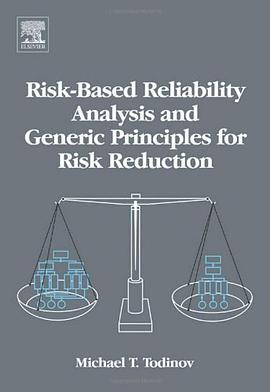
For a long time, conventional reliability analyses have been oriented towards selecting the more reliable system and preoccupied with maximising the reliability of engineering systems. On the basis of counterexamples however, we demonstrate that selecting the more reliable system does not necessarily mean selecting the system with the smaller losses from failures! As a result, reliability analyses should necessarily be risk-based, linked with the losses from failures.Accordingly, a theoretical framework and models are presented which form the foundations of the reliability analysis and reliability allocation linked with the losses from failures. An underlying theme in the book is the basic principle for a risk-based design: the larger the cost of failure associated with a component, the larger its minimum necessary reliability level. Even identical components should be designed to different reliability levels if their failures are associated with different losses.According to a classical definition, the risk of failure is a product of the probability of failure and the cost given failure. This risk measure however cannot describe the risk of losses exceeding a maximum acceptable limit. Traditionally the losses from failures have been 'accounted for' by the average production availability (the ratio of the actual production capacity and the maximum production capacity). As demonstrated in the book by using a simple counterexample, two systems with the same production availability can be characterised by very different losses from failures.As an alternative, a new aggregated risk measure based on the cumulative distribution of the potential losses has been introduced and the theoretical framework for risk analysis based on the concept potential losses has also been developed. This new risk measure incorporates the uncertainty associated with the exposure to losses and the uncertainty in the consequences given the exposure. For repairable systems with complex topology, the distribution of the potential losses can be revealed by simulating the behaviour of systems during their life-cycle.For this purpose, fast discrete event-driven simulators are presented capable of tracking the potential losses for systems with complex topology, composed of a large number of components. The simulators are based on new, very efficient algorithms for system reliability analysis of systems comprising thousands of components.An important theme in the book are the generic principles and techniques for reducing technical risk. These have been classified into three major categories: preventive (reducing the likelihood of failure), protective (reducing the consequences from failure) and dual (reducing both, the likelihood and the consequences from failure). Many of these principles (for example: avoiding clustering of events, deliberately introducing weak links, reducing sensitivity, introducing changes with opposite sign, etc.) are discussed in the reliability literature for the first time.Significant space has been allocated to component reliability. In the last chapter of the book, several applications are discussed of a powerful equation which constitutes the core of a new theory of locally initiated component failure by flaws whose number is a random variable.This book has been written with the intention to fill two big gaps in the reliability and risk literature: the risk-based reliability analysis as a powerful alternative to the traditional reliability analysis and the generic principles for reducing technical risk. I hope that the principles, models and algorithms presented in the book will help to fill these gaps and make the book useful to reliability and risk-analysts, researchers, consultants, students and practising engineers.This book offers a shift in the existing paradigm for conducting reliability analyses. It covers risk-based reliability analysis and generic principles for reducing risk. It provides a new measure of risk based on the distribution of the potential losses from failure as well as the basic principles for risk-based design. It incorporates fast algorithms for system reliability analysis and discrete-event simulators. It includes the probability of failure of a structure with complex shape expressed with a simple equation.
具體描述
讀後感
評分
評分
評分
評分
用戶評價
相關圖書
本站所有內容均為互聯網搜索引擎提供的公開搜索信息,本站不存儲任何數據與內容,任何內容與數據均與本站無關,如有需要請聯繫相關搜索引擎包括但不限於百度,google,bing,sogou 等
© 2025 qciss.net All Rights Reserved. 小哈圖書下載中心 版权所有





















